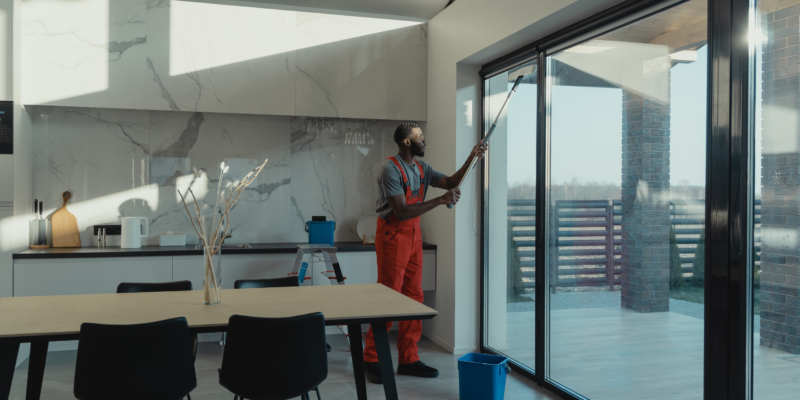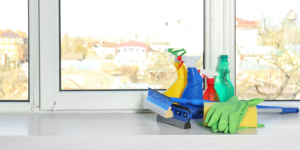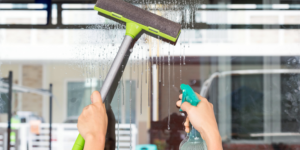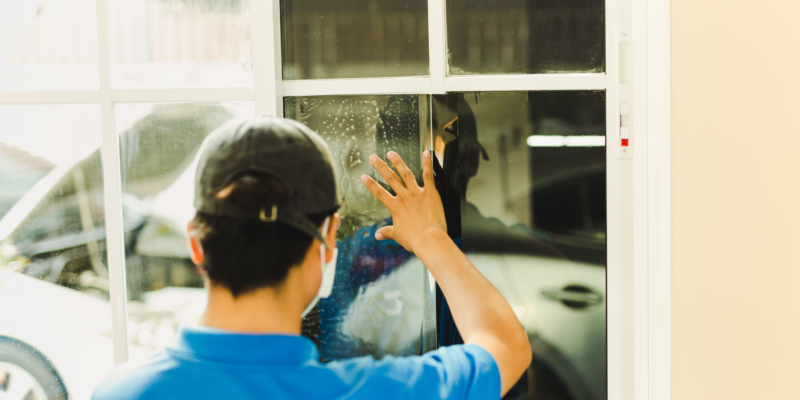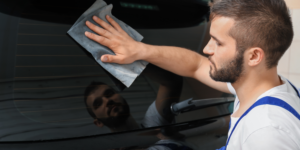Using the wrong cleaning solution is one of the most common mistakes made by inexperienced window cleaners. It is important to use a solution prepared exclusively for glass surfaces to avoid streaks and residue. Another error is not thoroughly drying the windows after cleaning, which causes water spots and streaks. Also, overuse of cleaning products is a common mistake because it can leave a film on the windows. Finally, not paying attention to detail when you clean window frames and sills can lead to an incomplete and unsatisfactory job.
Equipment and Supplies Insufficient
Poor equipment and supplies also are one of the usual traps of novice window cleaners. Lack of the right equipment such as squeegees and microfiber cloths causes poor cleaning results. In addition, inadequate training and technique leads to missed spots and uneven cleaning. Meticulousness and accuracy are key to window cleaners attaining a spotless outcome. In addition to this, not examining the windows for any damages or problems prior to the cleaning process may cause further difficulties. Inexperienced cleaners should concentrate on learning the proper techniques and purchasing quality equipment to improve their skills and offer top-notch services.
Besides, ignoring weather conditions may lead to problems for inexperienced window cleaners. Windows cleaning on a sunny day might lead to the cleaning product drying too fast, leaving streaks and residue. On the contrary, washing windows in rainy or windy weather will cause the process to be ineffective and frustrating. The weather forecast is very important for window cleaners since they need to pick up the right time for cleaning. Finally, the lack of appropriate safety measures for working at heights is the greatest danger for inexperienced cleaners. The primary consideration in the prevention of accidents is the safety equipment and the implementation of the best practices.
Inadequate Cleaning Techniques
Inexperienced window cleaners often make another common mistake which is inadequate cleaning techniques. Not using the correct motion while wiping the windows, for example, circular or back-and-forth motions, can result in streaks and an uneven finish. Also, failure to handle the tough stains or buildup with an adequate level of agitation will cause ugly marks on the glass. Lack of information on how to deal with various types of dirt and grime also causes ineffective cleaning. self-education of novice cleaners in the right cleaning methods and seeking guidance from experienced professionals is crucial for the development of their skillset.
Window Frames and Sills Ignoring
Another mistake that novice window cleaners often make is to ignore the window frames and sills. These areas usually gather dirt and grime which if not cleaned can make the windows look dirty. The complete and satisfactory job can be compromised by not properly cleaning and drying these components. Cleaning windows requires enough time and effort for all parts of the window to be cleaned and dried. By fixing this omission, inexperienced cleaners can raise their level of service and achieve outstanding results for their clients.
The most common mistake of amateur window cleaners is using the wrong type of cleaning solution which results in streaks and residue. Failure to dry properly leads to water spots and streaks, while too much of cleaning products leave a film on the windows. Inattention to the details of cleaning window frames and sills results in a half-done job. Moreover, without the essential tools and materials like squeegees and microfiber towels, the results will be unsatisfactory. Also, disregarding weather conditions or not taking safety precautions is a great danger. Inadequate cleaning techniques, involving wrong motions and insufficient agitation for tough stains, are also to blame for the unsatisfactory results. The final consideration is that the absence of window frames and sills diminishes the entire cleanliness.
Not Dealing with Particular Window Types
Also, not identifying particular window types may result in poor cleaning results. Different materials, for example, tinted or frosted glass, need specialized care and cleaning agents to avoid damage or discoloration. Inexperienced cleaners should teach themselves about the particular needs of each type of window to guarantee a complete and safe cleaning process. Disregarding these distinctions can cause expensive errors and unhappy customers. Knowing the intricacies of different window types is critical when it comes to providing excellent service and building a good name in the industry. Through priority for knowledge and attention to detail, inexperienced cleaners can raise their skills and provide better results.
To achieve optimal cleaning results one should know the difference in window materials. Different types of windows, e.g. tinted or frosted glass require particular care and cleaning products to avoid damage or discoloration. Inexperienced cleaners should ensure themselves on the individual needs of each type of window to carry out a job efficiently and safely. Not taking this into account may lead to costly errors and unhappy customers. Knowing the intricacies of different window types is a prerequisite to providing outstanding service and maintaining a good reputation in the trade. Through focusing on knowledge and attention to detail the novice cleaners will be able to reach higher levels of the skill of cleaners and deliver top-notch results.
Conclusion
In a nutshell, novice window cleaners typically face a variety of common mistakes that can affect the quality of their work. Starting from using the wrong cleaning solutions, wrong drying techniques, forgetting weather conditions and just overlooking safety measures, these mistakes may turn into undesirable results. Incorrect cleaning techniques, for example not properly rubbing and lack of agitation for persistent stains, add up to poor results. Ignoring specific window types can also cause an ineffective cleaning process and dissatisfied customers. Consequently, knowledge, attention to detail, and proper training should be given priority by incompetent cleaners so as to raise their level of skills and give excellent results.

